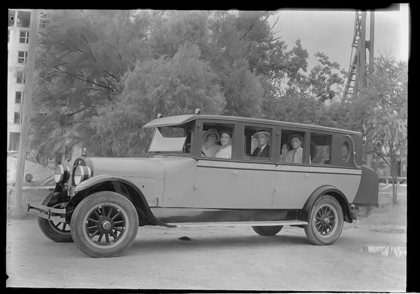The Feds vs. the Chinatown Bus: The Glorious Rebirth of American Bus Travel and Why the Government May Ruin it Again
HD DownloadThe long-distance busing industry was originally dominated by small scrappy companies competing fiercely to win over customers, only to become a government-protected cartel with declining ridership and all the competitive spirit of Ma Bell. A half-century later, busing returned to its glorious origins, but today it's in danger becoming a ward of the state once more.
In the 1910s, the very first American bus companies started picking up passengers on main streets all across America. There were few barriers to entry; entrepreneurs without much capital could buy or lease a motorcoach and then start doing regular pick-ups in front of a hotel or on a street corner.
Within a few years, local governments intervened to protect established companies from new competition. By 1925, most states required that bus companies apply for permission to service particular routes. The Motor Carrier Act of 1935 put the federal Interstate Commerce Commission (ICC) in charge of regulating bus travel. The ICC did everything from set ticket prices to grant established companies the exclusive right to operate between certain cities.

Protected from competition, bus companies grew indifferent to the changing tastes of their customers. Americans relocated to the suburbs, while car and air travel exploded in popularity. As inner-city depots became dangerous and decrepit, bus companies failed to alter their business models. After World War II, U.S. bus travel fell by half in just a decade and then it kept declining.
The industry languished for the next half century. In 1982, President Reagan deregulated intercity bus travel, which cleared the way for new companies to get into the business and start fighting to win back passengers, but for the next decade and a half not much changed. Then in the late 1990s, a group of immigrants from Fujian Province, China reinvented the bus industry in New York City's Chinatown. These entrepreneurs brought busing back to its roots of picking up passengers right off the street instead of from a traditional station. (The Chinatown bus companies became known as curbside carriers.) Once again, pretty much all you needed to start a bus company was a bus.
The Chinatown operators also figured out a way to win over customers that had eluded the established carriers for decades: charge really low prices. In short order, companies like Greyhound, Peter Pan, and Coach USA started opening their own curbside services, and today intercity busing is the fastest growing form of intercity transit in the U.S.
Today, history is repeating itself. An onslaught of new safety rules are forcing many small bus operations out of business, allowing the corporate carriers to grab more market share. On May 31, 2012, the Federal Motor Carrier Safety Administration shutdown 26 bus companies in a single day, and since then it has forced an additional 15 closures.
For a case study of the government's incompetence at regulating motorcoach travel, read "Why the Government Was Wrong to Shutdown Fung Wah Bus Company."
Over-regulating bus lines actually makes passengers quite a bit less safe. Since all the shutdowns, ticket prices have spiked considerably. This means fewer people will be enticed to take the bus and leave their cars at home. Because buses are orders of magnitude safer than cars, travelers are far more likely to die on the highway.
Hosted by Naomi Brockwell. Written, shot, and edited by Jim Epstein.
About 9 minutes.
Scroll down for downloadable versions and subscribe to Reason TV's YouTube Channel to receive automatic updates when new material goes live.


Show Comments (0)